Last updated on April 21st, 2024
Featured image: A quiet sunrise moment while learning to slow travel at home | Photo by Sandra Phinney
Finding the extraordinary in the ordinary close at home
by Sandra Phinney
Before you jump to conclusions, I’m using the word “psycho” as a shortened version of “psychogeography.” During my quest to explore my own ‘hood and embrace slow travel at home, as outlined in my last story, The July Project: Learning About Slow Travel at Home, I read a book titled Psychogeography by Will Self.
A prominent British novelist, journalist, and television personality, Will Self is a great walker who strolls 16, 32, even 160 km at a stretch, believing it’s the only way to explore the world. The author once said, “City dwellers are thrust hither and thither by commercial imperatives—work, consume, die—and are therefore unable to experience the reality of their environment.” His solution? Drift. Slow down. Take the time to see and experience things.
The author realized this when he found himself in Central London with a day to kill. Out of the blue, it struck him that he had never seen the mouth of the Thames River that flows through London, even though he had lived there his entire life. “It was nothing like I imagined,” he said. Self later returned and discovered all sorts of gems. They had been there all along. “You just need to get out there and experience.”
Get stories like this delivered straight to your inbox – join the newsletter here!
Discoveries close to home
Inspired by this, I took a topographical map of where I live and drew a 10-km circumference from my home on the Tusket River. I planned to discover as much as possible within that radius and called it The 10-km Challenge. Knowing that I live in a rural setting in the woods, my friends likely thought I was a bit daft and wondered: what’s to discover besides a few houses, trees, and more trees, and maybe a river or lake here and there?
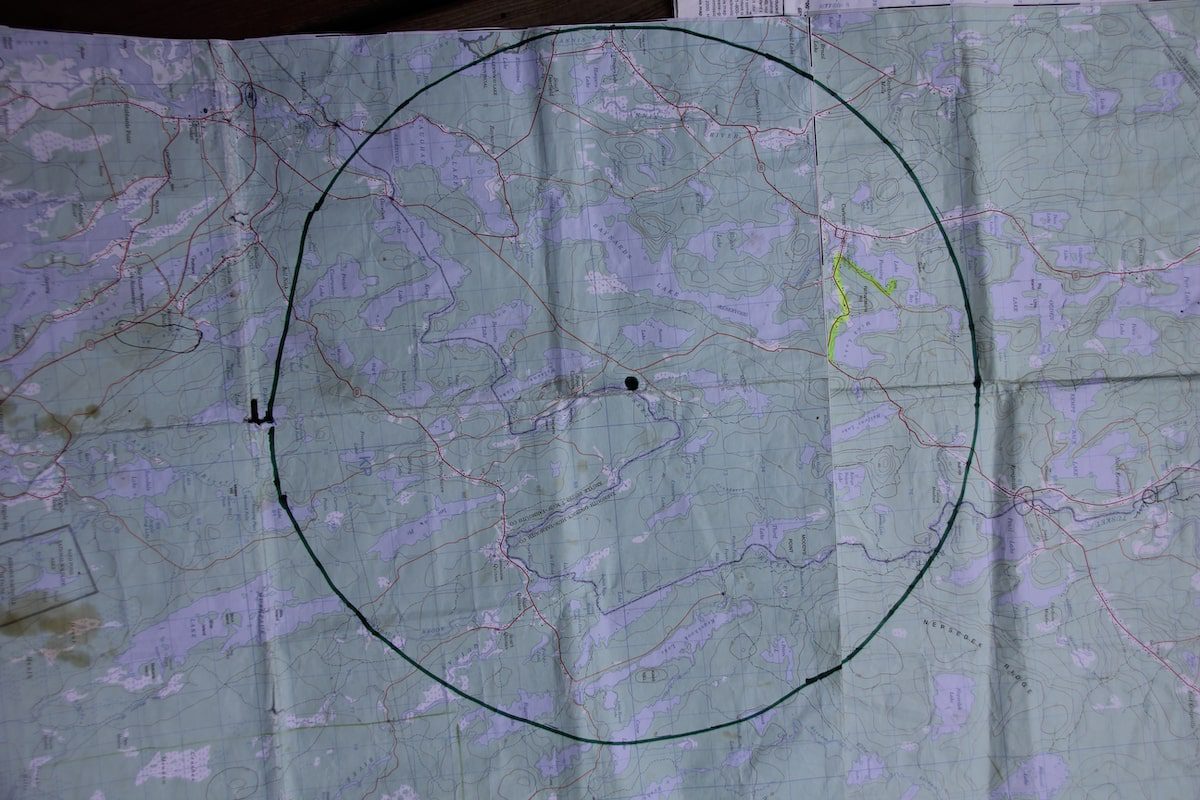
Topographical map with 10-km circumference surrounding where Sandra lives / Photo by Sandra Phinney
I quickly discovered that the circle I had drawn encompassed 315 square km and included a dozen villages with seven churches, three community halls, three schools, three fire halls, two BnBs, an old log cabin library, and a general store with a license to sell liquor and gas. I sought a village historian to learn more about this region and ended up in the home of Vicki O’Neil, a retired nurse with the lowdown on everyone and everything.
For starters, Vicki told me about a 17-metre-tall tulip tree (Liriodendron tulipifera) on a side road near her home. Sometimes referred to as tulip poplar, this unusual tree is also called canoe-wood, saddle-leaf tree, and white wood.
“During July, this towering tree blossoms out in green and orange flowers that look like tulips,” Vicki said. “If you’re lucky, the tree will be in bloom right now.”
Not only did I learn about this tulip tree, but I also learned there was an airport in Deerfield. “An airport?”
“Yes, an airport, Sandra. It’s something members of the flying club built years ago,” she said, offering me another round of tea and cookies. “You must go see it. It’s just down the road here in Deerfield.” She then produced a beautiful wooden bowl, made from a fallen limb many moons ago from that very tree.
At some point in our chit-chat, I asked Vicki what she knew about the Carleton library, a little log cabin from which I had once borrowed a couple of books when our kids attended elementary school in the village over 30 years ago.
“Lucille White is the person to see. She can meet you there and let you in.”
I left Vicki’s with a full belly and lots of information.
A tulip tree in full bloom
First stop, tulip tree—and there it was, in full bloom. Although I’ve never been fond of the word “gob-smacked” (and have never used it that I can recall), that’s precisely how I felt when I first saw the tree.

A flower from the Tulip Tree / Photo by Sandra Phinney
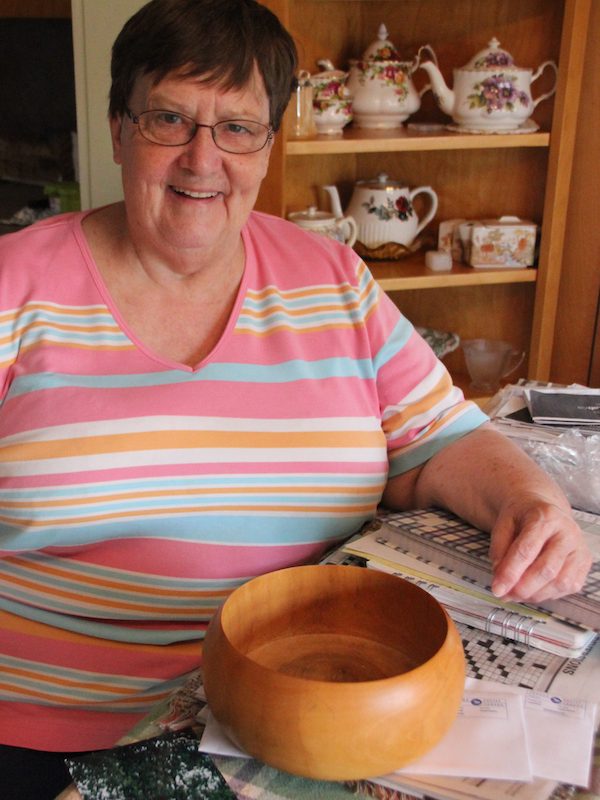
Vicki O’Neil with a bowl made out of the Tulip Tree / Photo by Sandra Phinney
For a while, I sat under that tree and looked up now and again. Many of the tulip-like flowers hung down, and I could see raging streaks of green and orange enveloped by white. It was somewhat surrealistic in an Alice in Wonderland kind of way.
An airport in the forest
Back on the main road, I saw the word “Airport” on a sign—exactly where Vicki said it would be. A dirt road led me to Finlay Air Park, a relatively flat 500-metre grass strip on a hilltop flanked by forest.
A small stark white plane with bright red stripes parked beside a hangar caught my eye. Imagine that—a rural airport built by volunteers within 10 km of where I live.

A small airplane at the airport in Deerfield / Photo by Sandra Phinney
A log cabin library
Mere minutes away, in the village of Carleton, was the Durkee Memorial Library—the one I hadn’t stepped foot in for over 30 years when I borrowed two books and never returned them.
Lucille White met me at the entrance of the log cabin. Walking in was like stepping back in time. I was amazed at the number of books housed in this small structure. For example, there are the complete works of Mark Twain. It’s an original “Author’s National Edition,” signed by Mark Twain. Mind you, it’s a stamped version of his signature with a line to say this is the authorized edition of his books, but even that is pretty impressive. Then there’s an entire 12-volume set of Rudyard Kipling’s work next to a collection of books penned by former U.S. president, Theodore Roosevelt, including everything from Hunting Trips of a Ranchman to Presidential Addresses and State Papers.
Know the Right Questions to Ask: Download our list of over 50 questions to ask when renting a long stay right here

Outside view of the Durkee Memorial Library / Photo by Sandra Phinney
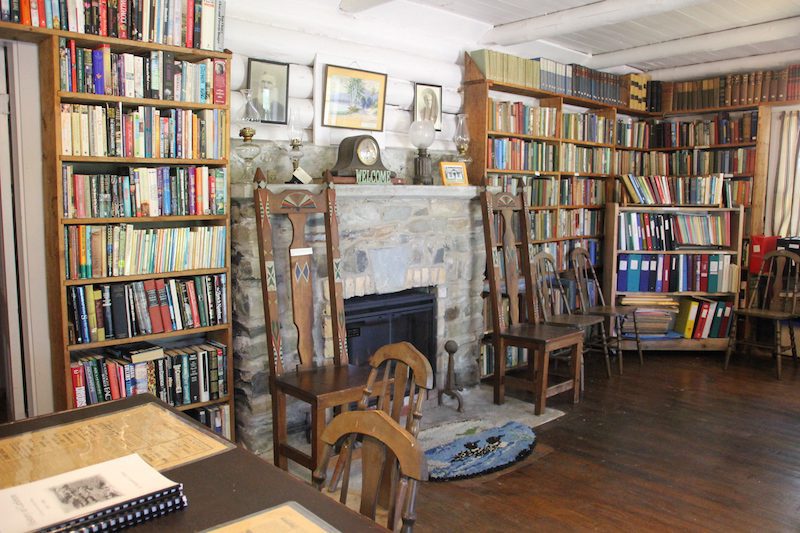
Inside the Durkee Memorial Library / Photo by Sandra Phinney
An unexpected museum
“Have you seen our museum?” Lucille asked. By the look on my face, she divined that I didn’t have a clue what she was talking about.
“Follow me,” she said.
Within seconds, I’m standing in a museum in the back of the library. Built by volunteers in 2009 with the assistance of a grant from the province, this 6-meter extension houses everything from the village’s ancient post office boxes to memorabilia from the old clothespin factory, a prosperous business in the community dating back to the early 1900s called Miller & Gordon Manufacturing. The company made clothespins, blueberry boxes, washboards, and paintbrush handles. Several of these items are on display.
I confess to Lucille about not returning the books I borrowed over 30 years ago and offered to replace them. She laughs, saying, “Happens all the time.” At 25 cents late fee per day, I reckon I owed the library about $3,000 per book. So, I made a modest donation and signed up to volunteer as a small atonement for my sins.
On my way home, I noticed how much slower I was driving; it was rare for me not to have my foot hard down on the pedal.
My last (truck) stop
Before turning down our driveway, I decided to make one more stop. I’ve always loved seeing old trucks parked in Neil Duncanson’s lot. He’s my closest neighbour and I often wondered about those rusted vehicles.
As Neil was home, we were able to walk and talk our way around his property. I had a close look at is 1967 Mack truck and a Mercedes Benz truck built in the 1980s. Then Neil pointed out his pride and joy.
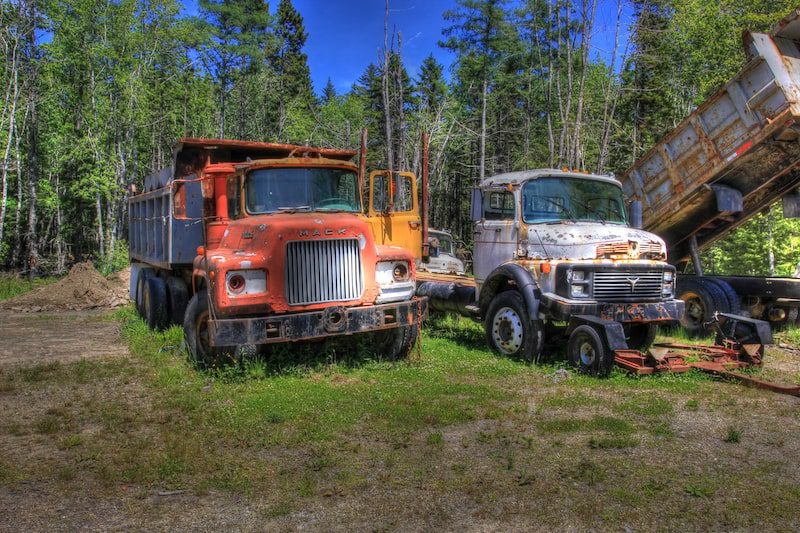
Neil Duncanson’s old—and interesting—trucks / Photo by Sandra Phinney
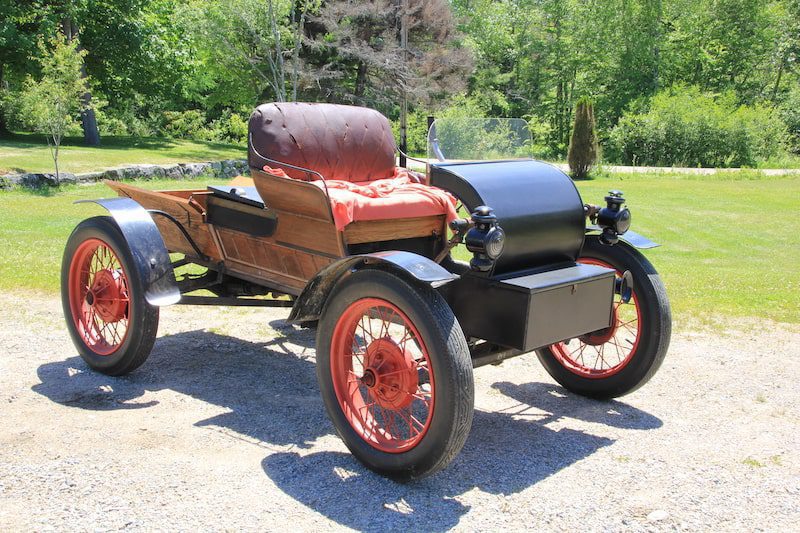
My neighbour’s 1903 Ford / Photo by Sandra Phinney
“Now that’s an old ’48 Dodge from Omaha, Nebraska. People called this model the ‘steak and grain,’ an old farmer’s truck that hauled grain. It’s still in running condition and still has the original tires from ’48. Can you believe that?” He then pirouetted, saying, “Now you wait a minute. I’ll be right back.”
As I took photos, he silently wheeled out a 1903 Ford from a building behind us. Only there was no steering wheel. Instead, one long stick shift (think elongated joystick) came up from the middle of the floor. “Just like using a tiller on a sailboat,” he said. Behind the seat was a gas tank the size of a shoebox. Neil told me how much he loved taking short excursions on the Canaan Road with his lady-friend, Isabelle, adding with a twinkle in his eye, “I call it Driving Miss Daisy.”
But that’s not all. Inside Neil’s “shop” were more antiques, such as three sleighs that horses would have pulled, including the one that belonged to his great-great-grandmother. Imagine that. A museum of sorts mere feet from where we live!
The magic of slow travel at home
These experiences all happened on the first day of my 10-k challenge. Over the next few days, I discovered the C.R.K. Allen Reserve, some rare flowers that only exist in two places in North America, a fabulous story about a neighboring community hosting an annual wild game dinner—and more. I also spent time gawking at sunrises and soaking in the beauty right in front of my nose.
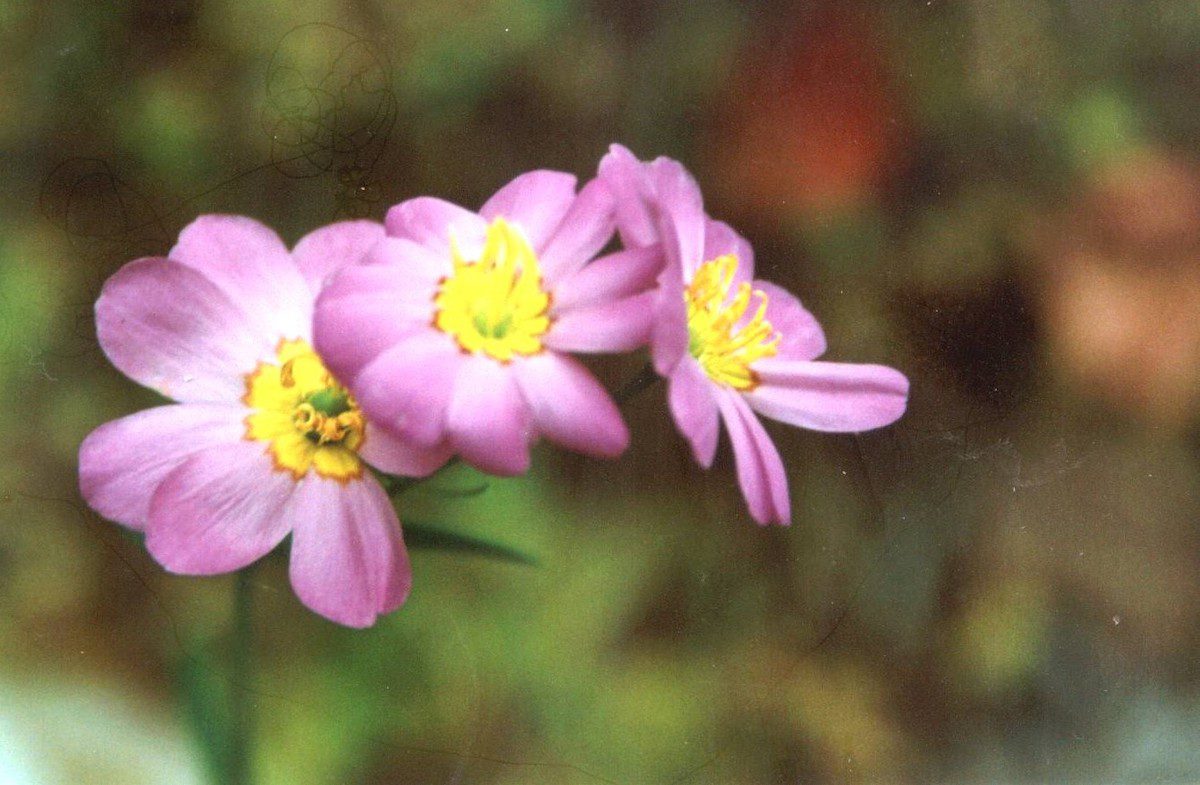
Rare Plymouth Gentian which only grows in two places in North America. One is within 10 km of the writer’s home! / Photo by Sandra Phinney
Now you can see how the 10-km challenge helped me get up close and personal with people and places. I just had to slow down and embrace the meaning of slow travel. The experience also helped me find the extraordinary in the ordinary and learn how to see in 3-D.
Read More Tales From Atlantic Canada
Travel That Teaches: Enriching our Lives Through Immersive Travel Experiences
When we dive into the deep end of a culture, we can create a never-to-be-forgotten experience that enriches our lives and enhances our understanding.
Meeting a Legendary Heroine, Elder Tshaukuesh Elizabeth Penashue, in the Big Land—Labrador, Canada
Sandra Phinney recounts her experience with Tshaukuesh Elder Elizabeth Penashue while learning about the land in Labrador, Canada.
30 Less-Travelled Places for Women in 2024
For our 30th anniversary, JourneyWoman reveals 30 less-travelled places for women in 2024, according to our writers and travel experts.

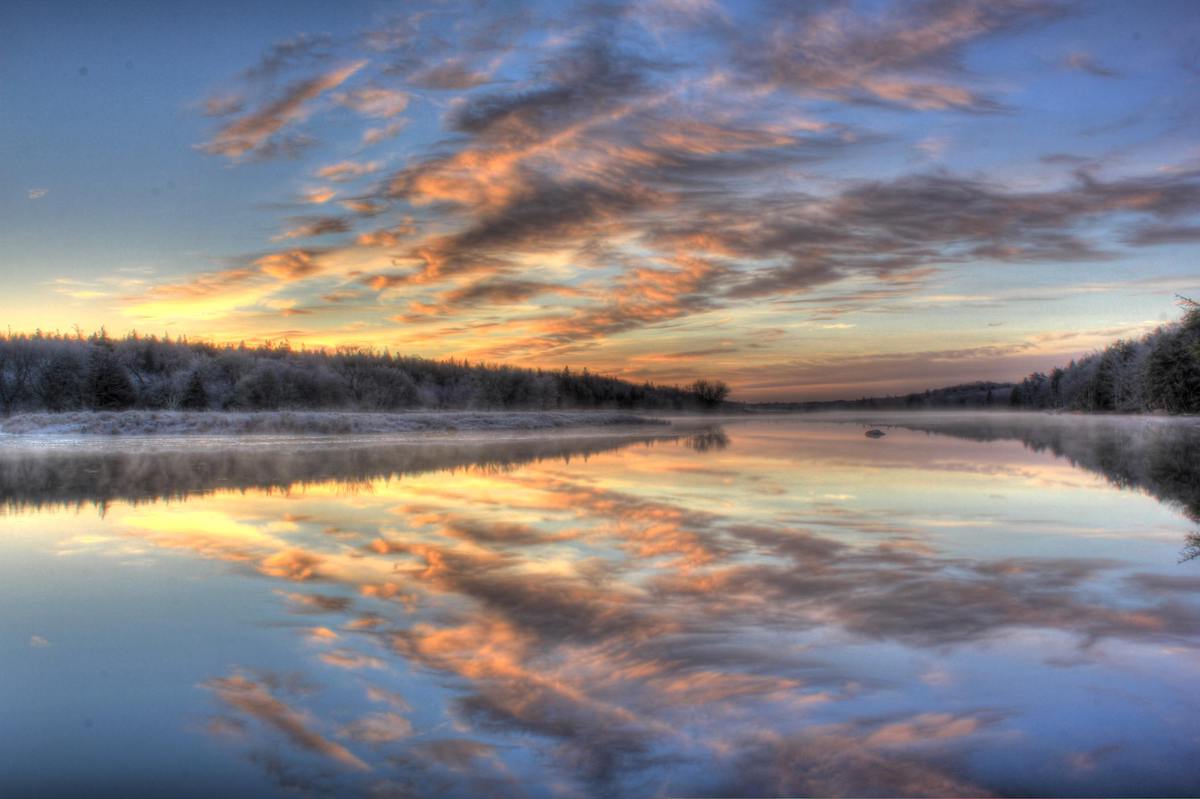


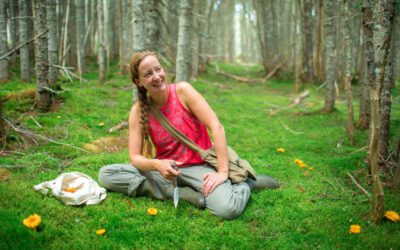


This is an amazing story that inspires me to take a slow journey through my own community. What’s within minutes of us, all of our lives, will amaze us if we just take the time to slow down and look at or smell the flowers along the way.
Thank you Sandra.
Thanks so much for popping into view Mary. Yes. So much happens when we take the time to look at or smell the flowers along the way!